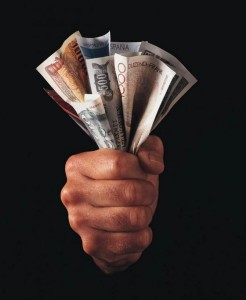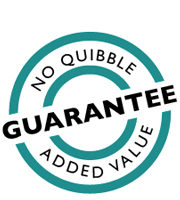Total shareholder returns (TSR) explained
 The total return a shareholder receives is made up of two constituents, dividends (income) and changes in the company’s share price (capital gains or losses). Total shareholder returns (TSR) is measured by adding the value of any dividends received per share to the increase in the share price over the period of measurement, and dividing by the initial share price. If the resulting percentage is greater than the opportunity cost of equity, i.e. the minimum return expected by shareholders, shareholder value is said to have been ‘created’. If TSR equates to the minimum expected return, value is said to have been ‘maintained’. And if TSR is less than the minimum expected return, shareholder value is said to have been ‘destroyed’. TSR can be measured over any time period and it is normally assumed that dividend payments are re-invested in the company’s shares. The TSR performance of an individual company may be affected by the general prevailing economic climate, industry specific factors and company specific factors all of which will exert an influence on TSR through fluctuations in the share price. Therefore, it is normal for a company to compare its TSR performance with that of a peer group of similar companies in the same industry and usually over a 3-5 year rolling period to smooth out any short-term ‘unsubstantiated’ fluctuations in share prices.
The total return a shareholder receives is made up of two constituents, dividends (income) and changes in the company’s share price (capital gains or losses). Total shareholder returns (TSR) is measured by adding the value of any dividends received per share to the increase in the share price over the period of measurement, and dividing by the initial share price. If the resulting percentage is greater than the opportunity cost of equity, i.e. the minimum return expected by shareholders, shareholder value is said to have been ‘created’. If TSR equates to the minimum expected return, value is said to have been ‘maintained’. And if TSR is less than the minimum expected return, shareholder value is said to have been ‘destroyed’. TSR can be measured over any time period and it is normally assumed that dividend payments are re-invested in the company’s shares. The TSR performance of an individual company may be affected by the general prevailing economic climate, industry specific factors and company specific factors all of which will exert an influence on TSR through fluctuations in the share price. Therefore, it is normal for a company to compare its TSR performance with that of a peer group of similar companies in the same industry and usually over a 3-5 year rolling period to smooth out any short-term ‘unsubstantiated’ fluctuations in share prices.
For most companies, the change in the share price will usually be a more significant factor than dividends paid in determining TSR. This is because in recent years, the average dividend yield (dividend per share divided by the share price) of FTSE companies has been circa 4% and the extra return necessary to deliver the opportunity cost of equity has to come from share price appreciation. Estimating the opportunity cost of equity is not easy, not least because opinion on the forward market risk premium is divided. Nevertheless, with an August 2014 UK Government 10-year ‘risk free’ bond rate of circa 2.5%, the opportunity cost of equity for the average FTSE company in August 2014 is probably in the range of 7.5%-10.5% (i.e. 2.5% risk free plus 5-8% market risk premium). If we assume for convenience that the opportunity cost of equity is 10%, and that the average FTSE company were to maintain a 4% dividend yield, the required increase in the share price to deliver the cost of equity would be 6%. Because shareholders expect to receive at least the cost of equity each and every year, the share price of the average company will have to increase by 6% each and every year merely to meet shareholders’ minimum expectations. This means doubling the share price every 12 years merely to maintain shareholder value. Anything less and shareholder value will be destroyed. Value creation is a tough master to serve.
To discuss your business critical issue
Please call Paul New on 020 8390 9972 or 07790 501225 or send a message.







